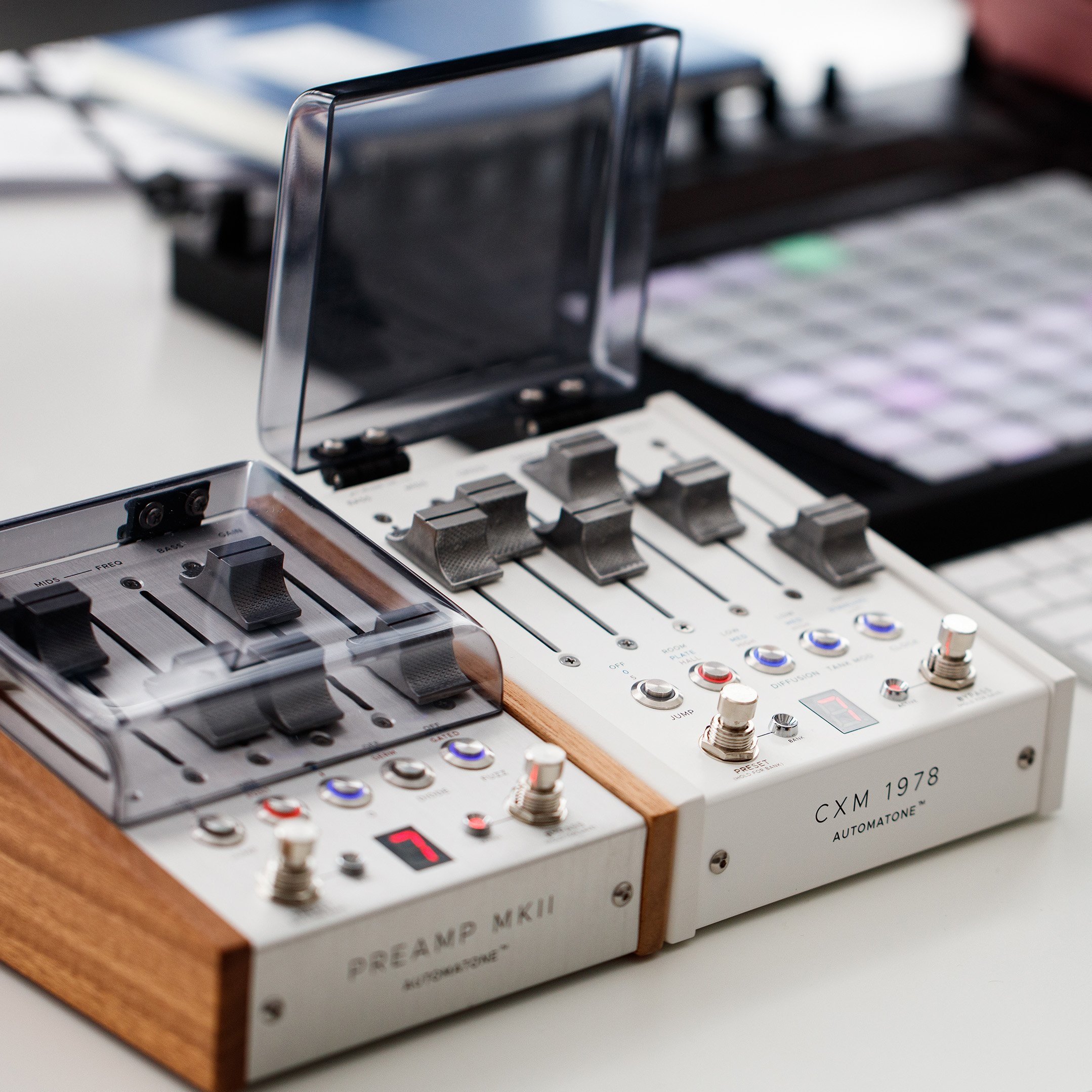Preamp MKII
Dirt Library
Preamp MKII has been discontinued. Remaining stock only available in the USA from www.chaseblisslegacy.com
Do-it-all of drive, filtering, and fuzz.
It takes a lot to break up a signal just right. The character is all in the details, the small decisions that add up to a circuit: Before or after, cut or bump, high or low. With Preamp MKII, we decided to just hand them over.
You can replicate the drives of your dreams, tweak, tinker and explore, then save those settings for quick recall. Variable diode clipping, resonant, routable mids, and two types of fuzz, all wrapped around the circuitry of a Benson amplifier. However you dare to dirt, the Preamp MKII is up for it.
made with
Benson Amps
Go Open for pure, roaring fuzz, or clamp down into Gated grind.
Inject a bit of asymmetry and edge with Silicon and Germanium diodes.
Move and mold your mids with variable resonance and routing.
Use Jump for quick, custom preset navigation.
The preamp.
Responsive and versatile.
Preamp MKII is built around the front-end circuitry of a Chimera tube amp, substituting FET transistors for the 12AX7s triode stages. The result is extremely responsive and versatile breakup, with the rich harmonics and musical EQ that Benson amplifiers are known for.
The fuzz
Get a little heavier by dropping in the fuzz circuitry, which comes right at the front of the signal flow (like fuzz should). The Open setting is classic, powerful, and massive, while the Gated option nets you a squished, zippy, and penetrating character.
The mids
The parametric midrange section is an extremely potent tool for finding the “just right.” Not only can you cut or boost any frequency of your choosing, you can also adjust the routing and resonance. Find some chime, push or pull chosen frequencies, or go over-the-top with some filter sweeps.
The diodes
How would you like to break up today? The classic transistor-only sound will yield more dynamic, amp-like results, while the diodes are your key to conjuring up your favorite drive pedal textures, with either a harder Silicon edge or that Germanium asymmetry.
Expand and integrate
The Preamp MKII is built around motorized faders that react to preset changes and external control signals. Every control is connected to a digital brain but your signal stays 100% analog. It includes MIDI, CV, and Expression control, as well as 30 internal presets.
Downloads
Specs
Mono I/O
Presets (30)
MIDI (PC, CC)
CV control
Expression control
All-analog signal path
True bypass
5.75" x 6.5" x 2.5"
9V Center Negative ~500 mA
-
What is the input impedance?
1 Megaohm, unless the fuzz is engaged. Turning on the fuzz switches to a low-input impedance because it sounds nice. More on that below.
Is this fuzz unhappy if there is a buffer or low-output impedance in front of it?
Yes, it’s one of those low input impedance fuzzes. Blame Joel. He loves them. It’s best to have a direct connection to your guitar to get the sound Joel intended. But heck, there are no rules. Sometimes this fuzz sounds really cool post-buffer.
Can I adjust the fuzz sound?
You can! You can adjust the gain, level and gate threshold. But you’ll need to open up the pedal to do it. It’s not hard. This video will guide you through it: https://youtu.be/u3yKdoX6txM.
Why isn't my pedal passing audio when I engage it?
You fried it. Probably got the wrong kind of power. We’ll need to fix it here at the shop unless you like your new CBA paperweight.
Why is my pedal making popping noises when switching presets?
There are a number of different switches within Preamp MK2 that turn on or off based on your settings. When you change a preset, this could mean a number of those switches change at once and interrupt the audio passing through the pedal. The best way to ensure you’re pop-free is to briefly pause while you change presets.







